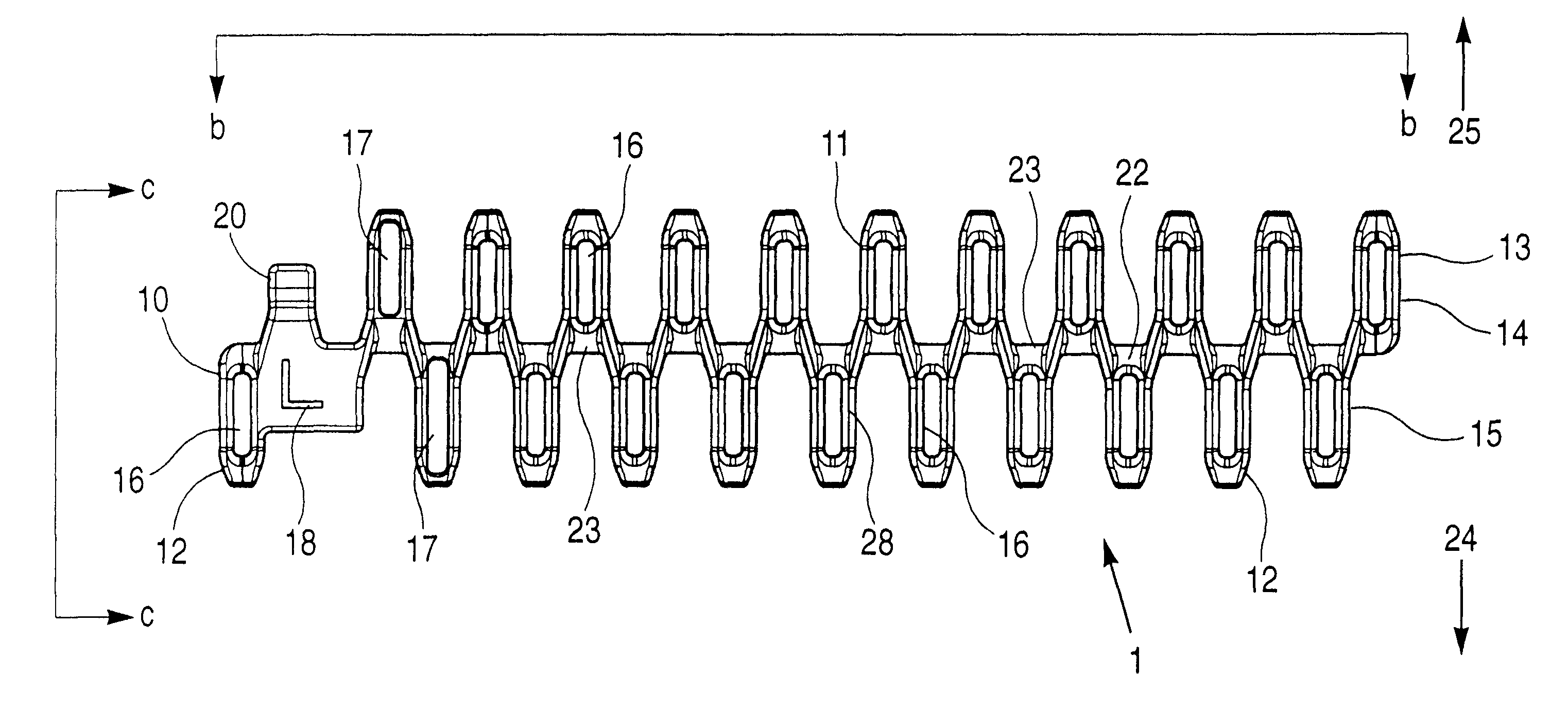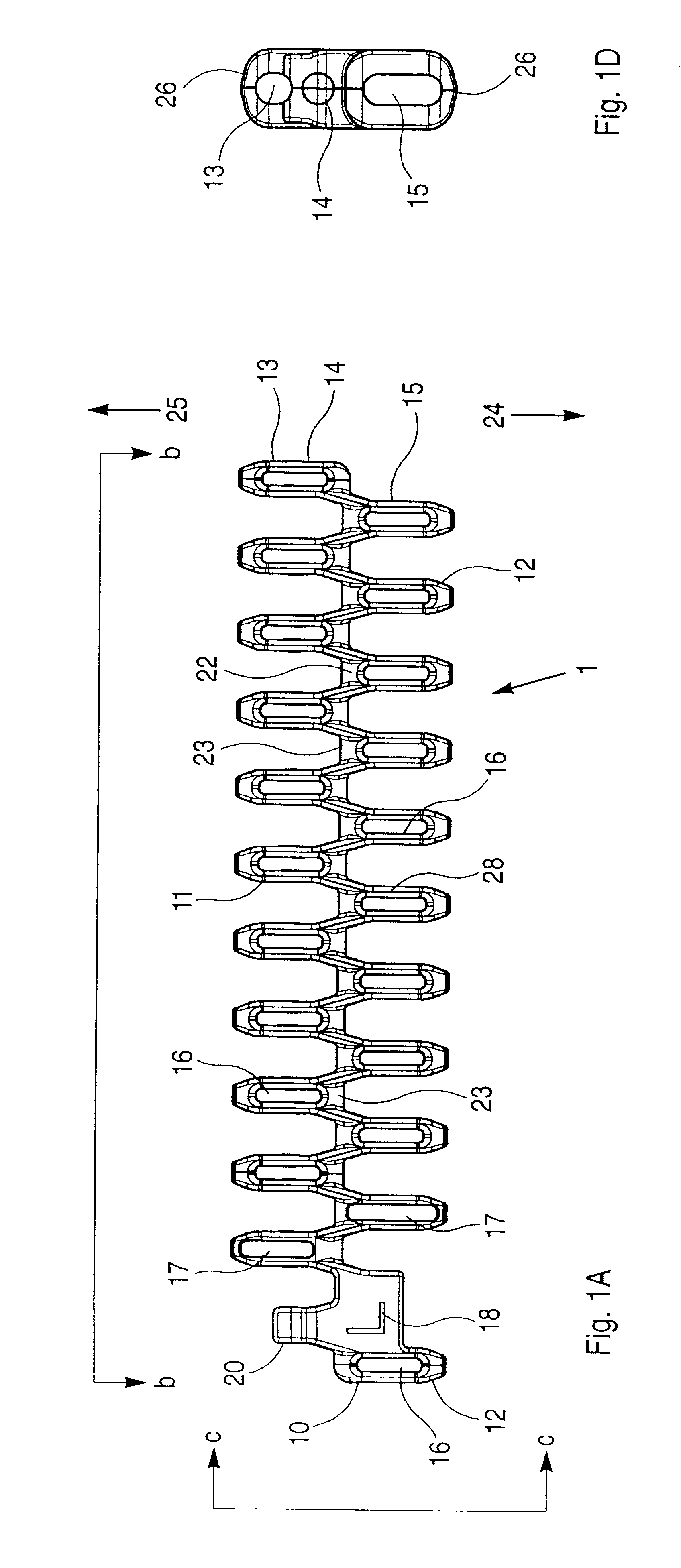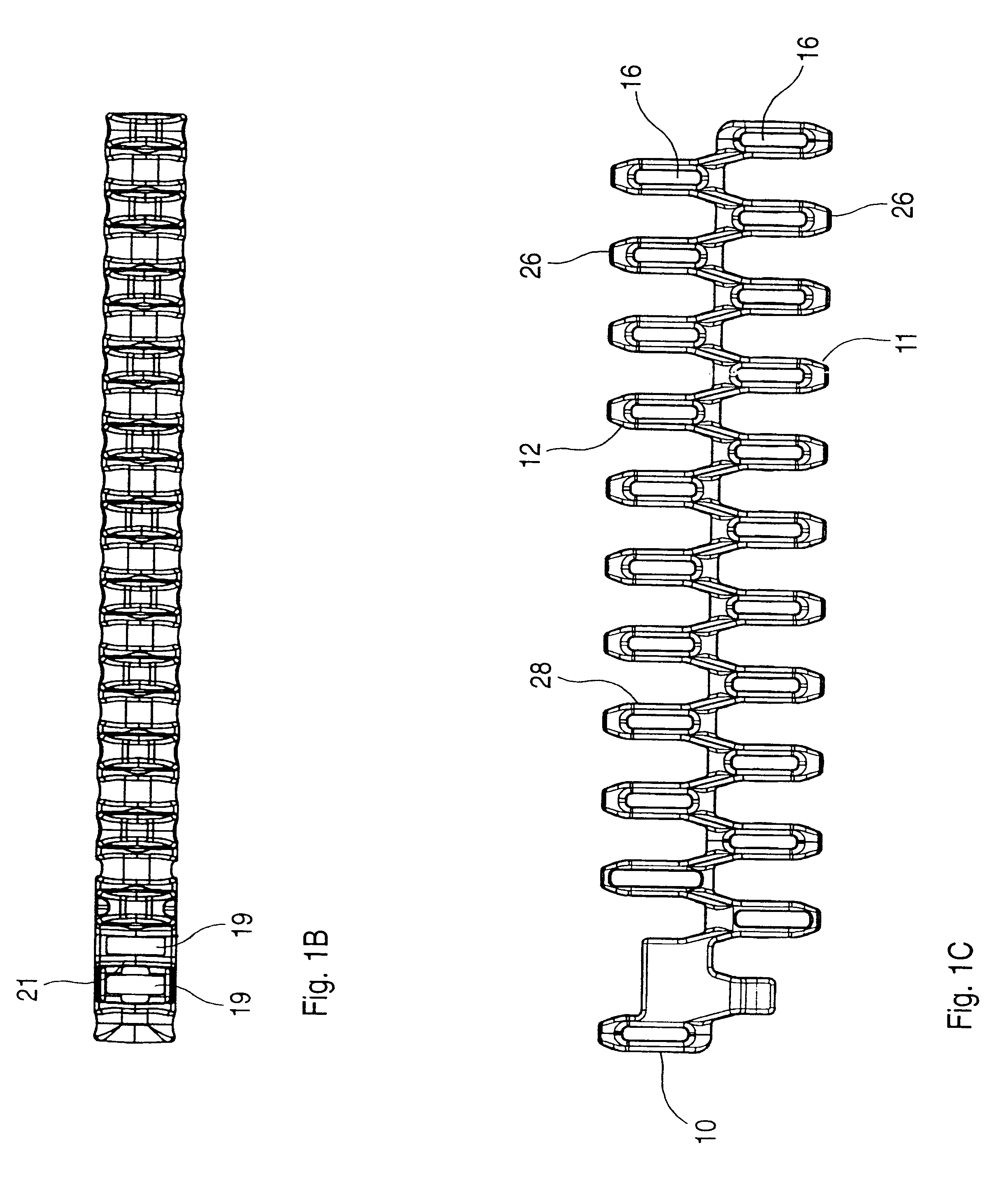Side-flexing conveyor belt
a conveyor belt and side flexing technology, applied in the direction of conveyors, packaging, transportation and packaging, etc., can solve the problems of adjacent belts not being placed sufficiently close together, dead-plates or other transfer means, and reinforcement elements in the form of side plates
- Summary
- Abstract
- Description
- Claims
- Application Information
AI Technical Summary
Problems solved by technology
Method used
Image
Examples
Embodiment Construction
In FIG. 5 of the drawing there is shown a plane, circular section in a section in the one side of a conveyor belt according to the invention which can have an optional running direction 24 or 25. In the preceding figures, i.e. FIGS. 1-4, the edge chain links (FIGS. 1 and 2) and module chain links (FIGS. 3 and 4) which are used are shown in more detail.
The section in FIG. 5 shows that the belt is composed of edge chain links 1 and 2 and module chain links 3 and 4 with the use of transverse rods 5, 6 through openings 13, 15 in the eye parts 11, 12, see FIGS. 1 to 4.
The edge chain links 1, 2h in FIGS. 1 and 2 comprise outermost, i.e. in that side which shall constitute the edge of the conveyor belt, a reinforcement area 18, i.e. an area configured with greater material thickness to provide increased tensile strength, and a central, symmetrical bridge part 22 from which eye parts 11, 12 extend in the running directions of the belt. The eye parts in the one side are staggered in relation...
PUM
 Login to View More
Login to View More Abstract
Description
Claims
Application Information
 Login to View More
Login to View More - R&D
- Intellectual Property
- Life Sciences
- Materials
- Tech Scout
- Unparalleled Data Quality
- Higher Quality Content
- 60% Fewer Hallucinations
Browse by: Latest US Patents, China's latest patents, Technical Efficacy Thesaurus, Application Domain, Technology Topic, Popular Technical Reports.
© 2025 PatSnap. All rights reserved.Legal|Privacy policy|Modern Slavery Act Transparency Statement|Sitemap|About US| Contact US: help@patsnap.com



